Vancouver, a city known for its stunning landscapes and diverse cultural tapestry, is also a vibrant hub for Indigenous artists and non-profits. This thriving community not only preserves and celebrates Indigenous traditions but also pushes the boundaries of contemporary art, fostering a rich cultural dialogue. Let’s explore the significant contributions of Indigenous artists and the non-profits that support them in Vancouver.
The Cultural Significance of Indigenous Art
Indigenous art in Vancouver encompasses a wide range of practices, from traditional forms such as carving, weaving, and beadwork, to contemporary mediums including painting, sculpture, and digital art. These artistic expressions are deeply rooted in the cultural heritage and spiritual beliefs of the Indigenous peoples, including the Coast Salish, Squamish, and Tsleil-Waututh nations.
Traditional Art Forms:
- Carving and Weaving: Traditional carvings, often made from cedar wood, depict stories, myths, and important cultural symbols. Weaving, using techniques passed down through generations, creates intricate patterns and designs that are both functional and symbolic.
- Beadwork: Beadwork is another traditional art form that involves creating elaborate designs on clothing, accessories, and ceremonial items. Each piece often holds significant cultural meanings and tells a story.
Contemporary Art:
- Painting and Sculpture: Indigenous artists in Vancouver are renowned for their innovative approaches to painting and sculpture, blending traditional themes with modern techniques.
- Digital Art: The digital age has opened new avenues for Indigenous artists to express their creativity. Digital art and multimedia installations are increasingly popular, offering fresh perspectives on Indigenous identity and experiences.
Prominent Indigenous Artists
Several Indigenous artists in Vancouver have gained national and international recognition for their work:
- Susan Point: A renowned Coast Salish artist, Susan Point is celebrated for her public artworks and prints that reflect the natural world and Salish traditions. Her work can be seen in various public spaces across Vancouver.
- Lawrence Paul Yuxweluptun: Known for his provocative and politically charged paintings, Lawrence Paul Yuxweluptun addresses environmental issues, Indigenous rights, and colonialism through his vibrant and surreal artworks.
- Marianne Nicolson: A member of the Dzawada’enuxw First Nation, Marianne Nicolson uses a variety of media, including painting, photography, and installation, to explore themes of cultural identity and history.
Non-Profits Supporting Indigenous Artists
Non-profit organizations play a crucial role in supporting and promoting Indigenous artists in Vancouver. These organizations provide resources, funding, and platforms for artists to showcase their work.
1. Bill Reid Gallery of Northwest Coast Art: Named after the acclaimed Haida artist Bill Reid, this gallery is dedicated to contemporary Indigenous art of the Northwest Coast. It offers exhibitions, educational programs, and workshops, providing a space for both established and emerging artists.
2. Vancouver Native Housing Society (VNHS) – Skwachàys Lodge: Skwachàys Lodge, operated by VNHS, is an innovative social enterprise that combines a boutique hotel with an urban Indigenous artist residency. The lodge features art and designs by Indigenous artists, and the residency program supports artists with studio space and mentorship.
3. The Indigenous Brilliance Collective: This collective celebrates Indigenous women, Two-Spirit, and queer artists through events, readings, and performances. It aims to create inclusive spaces for storytelling and artistic expression, fostering community and cultural exchange.
4. Full Circle: First Nations Performance: Full Circle is dedicated to the development and promotion of Indigenous performing arts. It organizes the annual Talking Stick Festival, which showcases a wide range of Indigenous art forms, including theatre, dance, music, and storytelling.
5. Urban Native Youth Association (UNYA): UNYA supports Indigenous youth in Vancouver through various programs, including the Native Youth Learning Centre and the Overly Creative Minds (OCM) program, which offers workshops in visual arts, music, and media production.
Challenges and Opportunities
While the Indigenous arts community in Vancouver is vibrant, it faces several challenges. Access to funding, representation in mainstream galleries, and the preservation of traditional knowledge are ongoing concerns. However, there are numerous opportunities for growth and collaboration.
Funding and Support:
- Increased funding from government and private sectors can provide more opportunities for Indigenous artists to develop their practice and gain wider recognition.
- Collaborative projects between Indigenous and non-Indigenous artists can foster mutual understanding and cultural exchange.
Education and Awareness:
- Educational programs in schools and communities can raise awareness about Indigenous art and culture, promoting respect and appreciation for these rich traditions.
- Public art projects and exhibitions can bring Indigenous art to broader audiences, highlighting its significance and contemporary relevance.
Indigenous artists and non-profits in Vancouver are at the forefront of a dynamic and evolving cultural landscape. Through their creativity and resilience, they continue to preserve and innovate, ensuring that Indigenous art remains a vital and celebrated part of Vancouver’s identity. Supporting these artists and organizations is not only an investment in cultural heritage but also in the future of a more inclusive and diverse artistic community.
